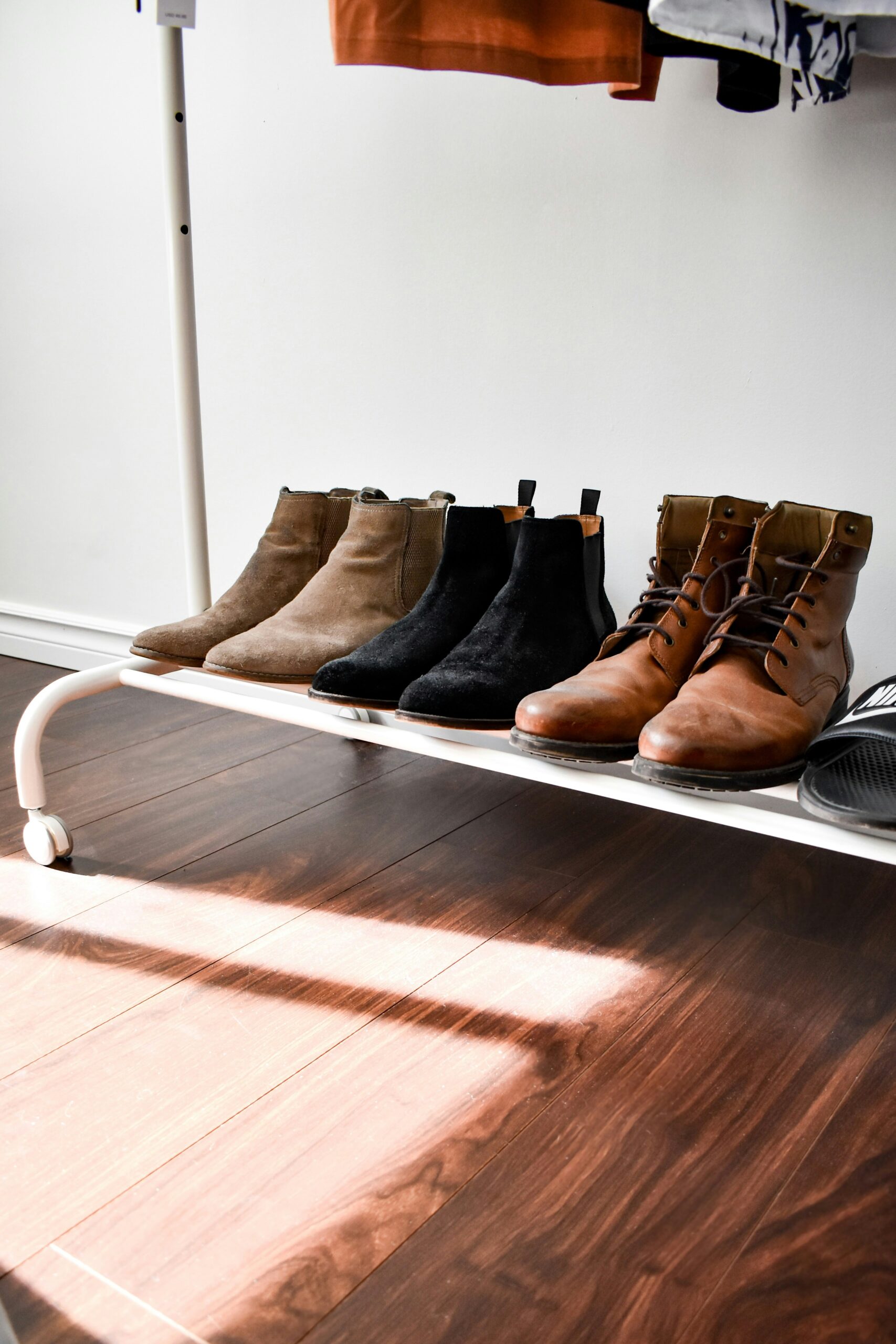In the heart of Japan’s bustling cities and tranquil countryside, a tradition as old as the very foundations upon which its houses are built continues to flourish. This tradition, unwavering and deeply ingrained in the cultural fabric of the nation, is the practice of removing shoes before entering a home. It’s a custom that speaks volumes about Japanese culture, emphasizing cleanliness, respect, and a deep connection to the home as a sacred space. As we step inside this tradition, we unravel the layers of its origins, significance, and the ways it has adapted to modern life, offering insight into a practice that, while simple, is profoundly meaningful to the Japanese people.
Unveiling Japan’s Shoeless Tradition: An Insight
The shoeless tradition in Japan is more than a mere practicality; it is a symbolic gesture, deeply rooted in the culture and everyday life of its people. This practice, known as the act of removing one’s shoes before entering the living spaces of a home, has been a staple of Japanese etiquette for centuries. It is a tradition that underscores the Japanese value of cleanliness and respect for the home. As we explore the contours of this custom, we uncover a tradition that is emblematic of Japan’s broader cultural ethos, one that cherishes harmony, respect, and purity.
The Origins of Japan’s Shoeless Custom
Tracing the origins of Japan’s shoeless tradition takes us back to the Heian Period (794-1185), where the architectural style of raised floor buildings, or "Tatami," first necessitated the removal of shoes to protect the delicate straw mats covering the floors. This practical measure evolved into a cultural imperative, reflecting the broader Japanese ethos of cleanliness and respect for one’s surroundings. The act of removing shoes became intertwined with the concept of leaving the dirt and impurities of the outside world behind, thus maintaining the purity of the home.
Etiquette and the Shoeless Tradition in Japan
The etiquette surrounding the shoeless tradition in Japan is intricate and nuanced. Upon entering a home, visitors are expected to remove their shoes at the entrance, or "Genkan," carefully placing them pointing towards the door, ready to be slipped into upon leaving. This practice is not merely about physical cleanliness but is a sign of respect for the host and the home itself. It is a gesture that acknowledges the home as a private, sacred space, distinct from the outside world.
The Significance of Removing Shoes in Japanese Culture
Removing shoes before entering a home goes beyond physical cleanliness in Japanese culture; it is imbued with symbolic meaning. This practice delineates the boundary between the external, chaotic world and the internal, serene sanctum of the home. It is a physical manifestation of the psychological and spiritual importance of keeping these two realms separate. Moreover, it reflects the Japanese value of mindfulness and intention in every action, encouraging a conscious transition from the hustle and bustle of daily life to the calm, respectful atmosphere of the home.
Entry Etiquette: Understanding Genkan
The "Genkan" plays a pivotal role in Japan’s shoeless tradition. This entryway area serves as a transitional space, not only between the outside and inside of a home but also between the public persona and private self. It is where the act of removing shoes occurs, but it is also a space for greeting guests and a display of hospitality. Understanding the significance of the Genkan is key to appreciating the depth of Japan’s shoeless tradition, as it encapsulates the cultural values of respect, cleanliness, and the separation of public and private spheres.
Shoeless Spaces: Beyond Residential Areas
Japan’s shoeless tradition extends beyond the home to encompass various public spaces, including schools, temples, traditional inns (Ryokan), and certain restaurants. In these settings, removing shoes is a sign of respect and an acknowledgment of the space’s sanctity or cleanliness. It is a practice that reinforces the community’s shared values and the collective responsibility to maintain the purity of communal spaces.
The Health Benefits of Going Shoeless
Beyond cultural significance, the shoeless tradition in Japan offers several health benefits. Walking barefoot or in socks helps improve balance and posture by allowing the feet to spread naturally without the constraint of shoes. This practice also reduces the risk of bringing in dirt and pollutants from outside, contributing to a cleaner indoor environment. Moreover, it promotes a deeper connection with one’s living space, encouraging a more relaxed and grounded lifestyle.
Navigating Japan: Tips for First-Time Visitors
For first-time visitors to Japan, understanding and respecting the shoeless tradition is crucial. It is advisable to wear socks or bring a pair when visiting Japanese homes or shoeless establishments. Paying attention to the cues and instructions provided by hosts or signs is essential for seamlessly adapting to this cultural norm. Embracing this practice can greatly enhance the cultural experience and deepen the visitor’s appreciation of Japanese customs.
Cultural Respect: Adapting to Japan’s Shoeless Norm
Adapting to Japan’s shoeless tradition is a mark of respect and an opportunity to engage more deeply with Japanese culture. Visitors and residents alike are encouraged to embrace this practice, not merely as a rule to be followed but as a meaningful cultural experience. By doing so, one contributes to the preservation of a tradition that holds significant social and cultural value, fostering a greater understanding and appreciation of what it means to step into the Japanese way of life.
The Global Influence of Japan’s Shoeless Practice
Japan’s shoeless tradition has transcended its borders, influencing global perspectives on home and cleanliness. Around the world, individuals have adopted this practice, appreciating its benefits for cleanliness, comfort, and a deeper connection to the home. In an age where cultural exchanges are more frequent than ever, the shoeless tradition stands as a testament to Japan’s enduring cultural influence and the global community’s openness to embracing practices that enhance our daily lives.
Modern Adaptations of the Shoeless Tradition
In contemporary Japan, the shoeless tradition has adapted to modern life while retaining its cultural significance. Innovations such as heated Tatami floors and stylish indoor footwear reflect the ways in which this tradition has evolved. These adaptations ensure the practice remains relevant and integrated into the Japanese lifestyle, demonstrating the culture’s ability to honor its traditions while embracing the new.
Concluding Steps: Embracing the Shoeless Way
The journey through Japan’s shoeless tradition reveals a practice rich in history, significance, and cultural value. It is a tradition that speaks to the Japanese ethos of cleanliness, respect, and mindfulness. As we embrace the shoeless way, we step into a world that cherishes the sanctity of the home and the importance of cultural preservation. In doing so, we not only respect the customs of a nation but also engage in a practice that enhances our own lives, offering a path to a more mindful and connected existence.
Navigating the depths of Japan’s shoeless tradition uncovers a practice that is much more than a simple cultural quirk. It is a profound expression of values, a marker of cultural identity, and a tradition that has found relevance in the modern world. As we step out of our shoes and into the homes of Japan, we do more than adhere to a social norm; we engage in a ritual that bridges past and present, connecting us to the heart of Japanese culture. In embracing the shoeless way, we find not just respect for tradition but also a step towards a more mindful and harmonious way of living.








